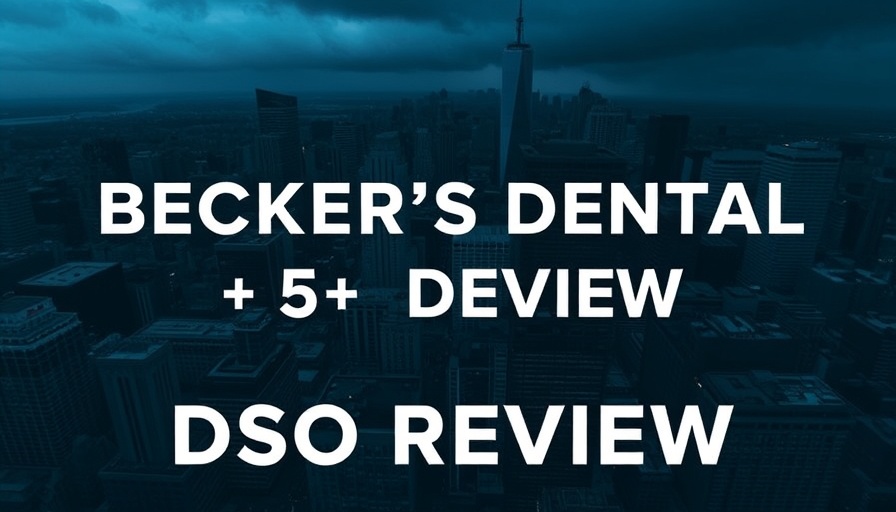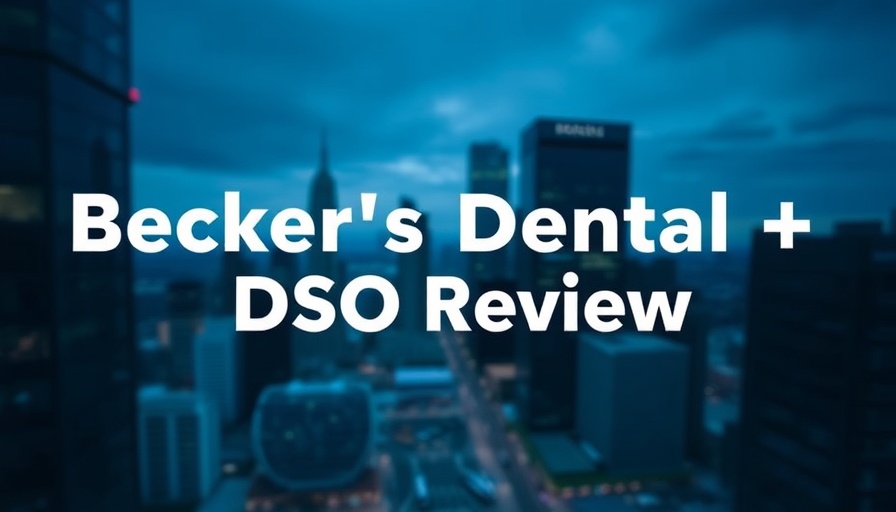
Align Technology Takes a Stand Against Patent Infringement
In a bold move that underlines the competitive landscape of dental technology, Align Technology, the maker of the well-known Invisalign clear aligners, has filed multiple patent infringement lawsuits against China-based Angelalign Technology. This sweeping legal action, initiated in the U.S., Europe, and China, seeks to address what Align alleges are direct violations of its intellectual property rights related to clear aligner technology.
The Growing Competitive Landscape of Clear Aligners
The clear aligner market has become increasingly crowded over the last few years, with several companies emerging to challenge the dominance of Align Technology. Angelalign, based in Shanghai, is among these challengers and has gained momentum by providing affordable alignment solutions, particularly in Asian markets. As Dr. Emily Johnson and many other practitioners know too well, staying abreast of technological advancements in this field is crucial to offering the best care to patients, while also maintaining a competitive edge.
Understanding the Legal Implications
The implications of these lawsuits could be significant, not just for the companies involved, but for the orthodontic industry as a whole. By filing for injunctive relief and monetary damages, Align Technology aims to curtail Angelalign’s growth, protect its market share, and assert its legal rights over its innovations. Experts believe that such legal battles are not merely about monetary compensation but also about setting industry standards and benchmarks in technology.
Broader Impacts and Ethical Considerations
For professionals like Dr. Johnson who prioritize integrity in their practice, the ethical considerations of this situation are important to consider. How will these lawsuits impact competition? Will it lead to a more innovative environment or stifle emerging companies that might not have the same resources as larger corporations? While Align’s legal actions may reinforce its position, they may also raise questions about the balance between protecting innovation and fostering competition in the sector.
Current Trends in Dental Technology
As the industry evolves, it's witnessing a surge in dental technologies, including artificial intelligence, virtual reality, and robotics, capturing the attention of dental leaders. This environment of rapid tech development means dentists must remain informed about the tools and products they choose for their practices. The legal struggles surrounding clear aligners are illustrative of broader trends where complex technology creates both opportunities and challenges.
Future Predictions: Will More Legal Battles Emerge?
The current lawsuits may set a precedent fueling future legal disputes in the dental technology arena. As new players continue to emerge, the scrutiny over patents and intellectual property will likely intensify. If firms see legal action as a viable strategy for maintaining competitiveness, Dr. Johnson and her peers may need to prepare for a landscape where legal considerations play as significant a role as technological advancements.
Final Thoughts: The Takeaway for Dental Professionals
This situation underscores the importance of understanding intellectual property rights in the dental technology landscape. For dentists, including Dr. Johnson, it is critical to remain vigilant about the products they endorse and utilize in their practices. Keeping informed about such developments not only empowers practitioners but also enhances patient trust and ensures that the most effective technologies are made available.
In conclusion, as Align Technology deftly navigates this legal labyrinth, those in the dental field must equip themselves with knowledge that transcends technology. By doing so, they not only contribute to their professional growth but also to the improvement of patient care in an ever-evolving healthcare environment.
 Add Row
Add Row  Add
Add 




Write A Comment